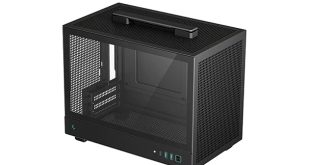To put this case through its cooling paces we will be using a test system consisting of an AMD FX-8350, Radeon HD 7850 and multiple storage drives. This system allows us to produce a substantial amount of heat and effectively test the Thermaltake Chaser A31‘s cooling capabilities.
For stress testing we use a mixture of Prime95 and FurMark to create the maximum heat output. Prime95′s ‘Small FFTs’ setting allows us to stress our CPU. FurMark’s ‘GPU Burn-in’ mode creates the maximum amount of load our GPU is ever likely to see.
Test System:
- Processor: AMD FX-8350.
- Motherboard: ASRock 990FX Extreme9.
- CPU cooler: Thermaltake Frio (100% fan speed).
- Memory: 8GB Patriot Viper 2133MHz.
- Graphics card: Sapphire Radeon HD 7850 1GB Dual-X (‘auto' fan setting).
- Power supply: Seasonic Platinum-1000.
- Storage drives: 128GB OCZ Vertex 4 (OS), 320GB Seagate 7200.12.
- OS: Windows 7 Professional 64-bit.
Thermal Performance Test Procedures:
- The case’s default fan configuration is used to give an accurate interpretation of the out-of-the-box performance.
- The Thermaltake Chaser A31‘s default fan configuration is: 1x 120mm front intake, 1x 120mm rear exhaust.
- The fans are operating at full speed.
- We allow the system to idle for 15 minutes and record the stable temperatures.
- We allow the system to operate under extreme stress for 15 minutes and record the stable temperatures.
Room temperature was maintained at 24°C.
Cooling performance is sufficient enough to tame a mid-range, gaming-calibre build. With just one intake and one exhaust fan, Thermaltake's Chaser A31 can't match the cooling performance of NZXT's Phantom 630 when a heavy load is applied to the system.
Purchasing an additional 120mm fan for the uppermost front mount will help to improve cooling performance. We would recommend purchasing a 120 or 140mm unit for positioning in one of the roof mounts, but make sure that there is enough clearance in the confined space above a large CPU cooler.
 KitGuru KitGuru.net – Tech News | Hardware News | Hardware Reviews | IOS | Mobile | Gaming | Graphics Cards
KitGuru KitGuru.net – Tech News | Hardware News | Hardware Reviews | IOS | Mobile | Gaming | Graphics Cards




